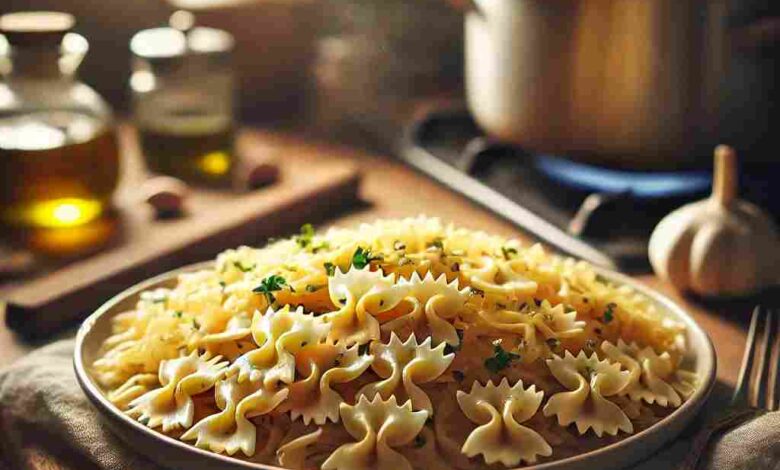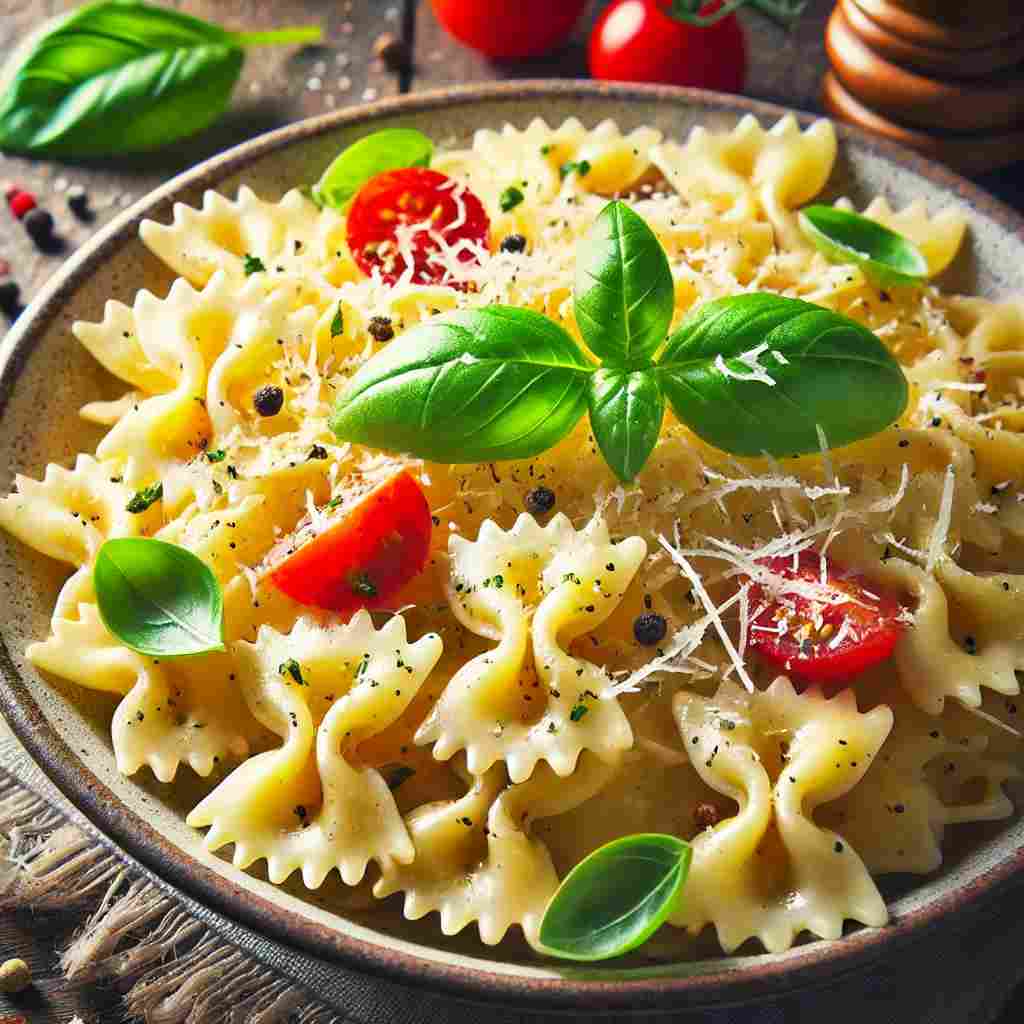How to Make a Tasty Farfalle Pasta: The Complete Guide

Farfalle pasta, commonly known as bow-tie pasta due to its unique shape, is a versatile and delicious option for many dishes. Whether you’re planning a light summer salad or a hearty Italian meal, farfalle holds sauces beautifully and offers a delightful bite. In this guide, we’ll walk you through everything you need to know about making farfalle pasta from scratch and cooking it perfectly.
What Is Farfalle?
This dish is called Farfalle, which means butterflies in Italian, and it comes from the Lombardy and Emilia-Romagna regions of Italy. It was born out of pure creativity, as Italian housewives did not want to let all the unused dough (left over from making stuffed pasta) go to waste. Not only does farfalle look like it belongs on your plate, its pinched middle likes to keep sauces in check, so each bite just gets better and better. Farfalle is versatile—it can be enjoyed in a creamy Alfredo or with a tangy tomato pasta sauce and it holds up well as a cold pasta salad.
7 Facts
- Category: Shaped pasta
- Meaning: ‘Butterflies’ in Italian
- Place of Birth: Italy
- Cook Time: 10 to 12 minutes
- Variants: Rigate, Tricolore, Farfalline (small), Farfallone (large)
- Alternative Names: Bow tie pasta, Butterfly pasta
- Substitutes: Fusilli, Conchiglie, Penne, Gemelli
Ingredients for Homemade Farfalle Pasta
To make farfalle pasta from scratch, you don’t need a lot of ingredients, and it’s easier than you might think. Here’s what you’ll need:
- 200g of all-purpose flour (or ‘00’ flour for authenticity)
- 2 large eggs or 3 small eggs
- A pinch of salt
- Flour for dusting
You can optionally add spinach or beetroot to your dough if you want to create colorful farfalle for a fun twist.
Step-by-Step Guide to Making Farfalle
Step 1: To Make the Dough
Pour the flour onto the table or into a large bowl, shaping it into a mountain with a well in the center. Inside that well, put the eggs, adding a pinch of salt, and, using a fork, start incorporating the flour into the eggs bit by bit. If too dry, add a teaspoon of water. Once it starts to come together, knead for about 10 minutes, until the dough is smooth and elastic. Cover the dough with plastic wrap and rest for 30 minutes.

Step 2: Rolling and Shaping Dough
Once rested, roll out using a rolling pin or a pasta machine. Get to about 1-2 mm thick. Cut into rectangles of about 4-5 cm wide by 2 cm in length. Pinch the center to create the iconic bow-tie shape. Don’t bother if your shapes aren’t perfect; homemade pasta is supposed to have character! Allow your shaped farfalle to air dry for about 30 minutes before cooking.
How to Cook Farfalle Pasta
Properly shaped farfalle is just as significant as cooking it. Boil a large pot of water and add a big pinch of salt. Boil water, and cook your fresh farfalle for 3-4 minutes, or your store-bought dry pasta for about 10-12 minutes till al dente. Fry and stir intermittently to avoid burning on the bottom. Make certain to eat a piece of pasta for assigned protein and vegetables, but avoid the flour.
Pro Tip:
If you freeze your own farfalle pasta, spread the pieces out on a cookie sheet and then transfer them to a bag or other storage container after an hour in the freezer. This stops them from becoming one solid brick in the freezer.
Delicious Sauces to Pair with Farfalle
Farfalle is incredibly versatile and pairs well with a variety of sauces. Here are some classic and modern options:
1. Creamy Alfredo Sauce
One of the most common ways where it is combined with Alfredo Sauce. Together, Alfredo and farfalle are richly delicious. Add fried mushrooms or grilled chicken to spice up this dish.
2. Tomato Basil Sauce
If you want something lighter, a basic tomato basil sauce is the way to go. The bite of farfalle pairs perfectly with the acidity of the tomatoes and sweetness of fresh basil.
3. Pesto
For an earthy, herbal taste, farffaline with pesto is the best pick. The pesto gets stuck in all the little ridges and corners of the pasta, so spoonful after spoonful of noodles has that perfect balance of flavors. We often serve it with parmesan, cherry tomatoes, and grilled veggies to turn this into a meal.
4. Salmon and Cream Sauce
For a slightly more refined option, try serving farfalle with smoked salmon and a cream sauce. The creaminess of the cream with salty, smoky salmon results in a treat yo self kind of dish.
Fun Variations with Farfalle Pasta
If you’re looking to experiment beyond traditional sauces, there are plenty of creative recipes you can try with farfalle pasta:
Summer Pasta Salad—Toss cooked farfalle with fresh veggies, feta cheese, and a vinaigrette for a light summer salad. It is also an ideal dish to serve chilled for a picnic.
Baked Farfalle Casserole—This dish combines cooked farfalle with a rich tomato gravy, topped with mozzarella cheese and baked to golden perfection, making it the perfect family comfort meal.
Creamy Spinach Farfalle—Cook spinach and garlic in a creamy sauce, toss with farfalle for a hearty, nutrient-rich meal!
Why You Should Make Farfalle Pasta at Home
I know that making pasta from scratch could be a little overwhelming or difficult at the beginning, but trust me it is actually very easy and fun! It is homemade fresh pasta but you know exactly what are the ingredients! Pasta from the store is usually laden with preservatives anyway, so if nothing else at least you are in control of what goes into your food when making it yourself. Additionally, you are able to show off with the colors and flavors which, in turn, will impress your family and friends.
Final Thoughts
This pasta is great for the pasta lover, those just getting around to cooking food or simply because of its versatility. Its unique shape, adaptability, and compatibility with a vast amount of sauces keep it as the house favorite. Follow this guide and not only will you know how to make farfalle from fresh but also be making delicious meals, forever remembered and enjoyed by yourself or a loved one.





